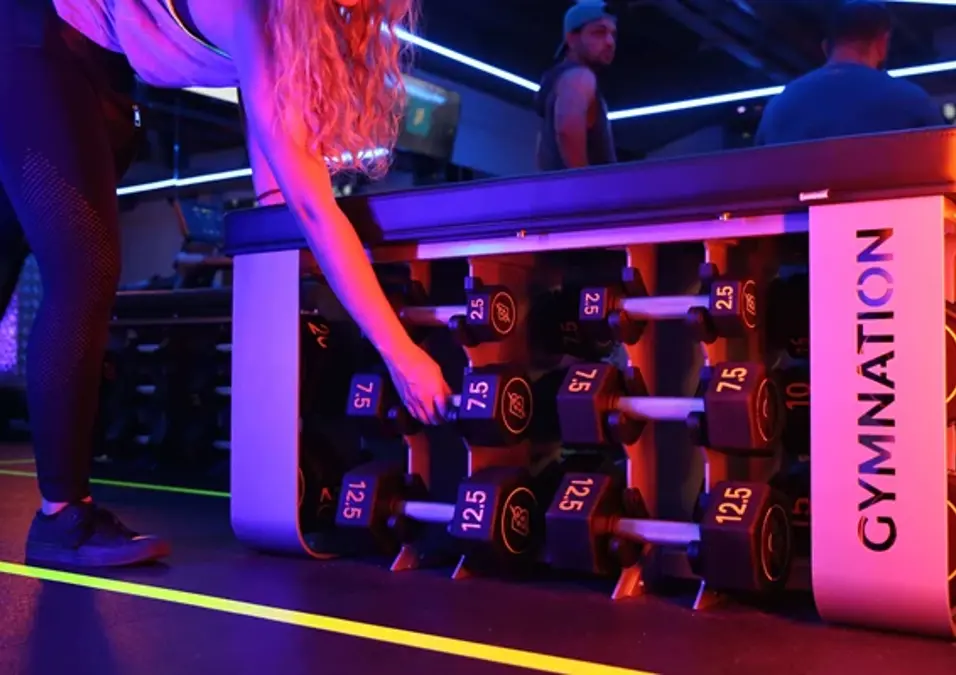The benefits of circuit training

SIGN UP FOR YOUR FREE DAY PASS TODAY!
The idea of attending a 'gym near me' and training regularly fills many of us with images of slogging away for hours on end on treadmills and in the weights room. This can definitely be the case, if this is what’s needed to hit your goals. However, all it really takes is a few minutes a day of exercise to significantly boost your health and fitness.
Pretty much every gym near you will offer dozens or more fitness classes that take half an hour or less. Timetables can include everything from Zumba to spin, HIIT to yoga, and everything in between.
If you get bored easily, find it hard to find motivation, or simply don’t know what you should be doing or what you enjoy, it will be a very good idea to try a range of them.
However, if you want to make the most out of your time, getting in as much as possible into as short a window as possible, circuit-based classes and circuit training will be the way to go.
Putting your fitness first with circuit classes
Regularly taking part in exercise can:
- Help you to maintain a healthy weight
- Improve your mood, both acutely and non-acutely
- Give you more energy
- Improve your cardiovascular and respiratory system functions
- Lead to a stronger immune system
- Keep your muscles and bones healthy and functioning
- Reduce your risk of suffering a multitude of chronic diseases, like heart disease, obesity and type 2 diabetes
- Lead to improved cognitive function
- Help you to overcome symptoms of stress and depression
- Lead to better sleep
- Help you to manage pain
- Improve your mobility
- Improve your libido
These are just a few of the top benefits of keeping up an active lifestyle. This can all be achieved in as little as fifteen minutes per day if you take part in circuit training. Circuit training involves periodisation of exercises. This generally means performing a series of exercises – say 6-8 – back-to-back for a set amount of time or set number of sets and reps.
So, for instance, you could perform the following circuit:
- Squats (10)
- Push ups (10)
- Box jumps (5)
- Barbell rows (10)
- Kettlebell clean and press (5/5)
- Ab wheels (5)
- Star jumps (20)
- rest for a minute, then repeat five times, for six total sets –
This whole circuit should take around 2-3 minutes to complete, with the rest period include, for a moderately well-trained athlete. Six rounds will therefore take about 15 minutes (or 12 – 18, on these timings).
This circuit also works every single muscle group in the body, including legs, posterior chain, chest, shoulders, lower and upper back, arms and core. That means that you will be eliciting growth and adaptation in every muscle in the body for the sake of around 15 minutes of work.
Packing all of this together – and finishing each round with star jumps – will be both aerobically and anaerobically demanding. Your heart rate should be in the 85%+ zone for much of a circuit training session. Thus, you not only get good muscular stimulation, you’re also giving your cardiovascular system an incredibly effective, efficient workout.
If you’re new to circuit-style training, attending a circuit training class is always a good idea.
Circuit training classes offer:
- Accountability
- Safety
- Expertise
- Variety
- Company
- Comfort
Of course, anybody familiar with HIIT will see some similarities in circuit training. The two terms are often used interchangeably. This is wrong, as there are some key differences between the two. However, their goals are certainly pretty well aligned and HIIT classes may be a good place to begin if you’re looking for the kinds of effects listed above.
HIIT
High intensity interval training (HIIT) is one of the most popular forms of training at the moment. There is very good reason for this. It’s a form of interval training- a cardiovascular exercise protocol in which short periods of intense anaerobic sprints are alternated with less intense recovery periods until exhaustion sets in.
HIIT classes typically last less than 30 minutes. Some protocols and formulae last only a few minutes. Most notably, Tabata protocols last only four minutes and are well-known for their ability to improve athletes’ V02 max, shred muscles and exhaust participants.
The duration of any individual session or protocol will generally reflect the intensity of the intervals, and/or vice versa, so a 30-minute session would involve far less intense forms of exercise than Tabata protocol sprints would, for example.
HIIT and circuits can be combined to great effect. Try including cycle sprints in your next circuit class. Or try turning your regular circuit into HIIT by skipping rest periods in favour of a lower intensity activity like walking or gentle rowing. Or, simply alternate between HIIT sessions and circuits – it will keep you engaged, give your muscles different stimuli, and supercharge your cardiovascular system.














































































